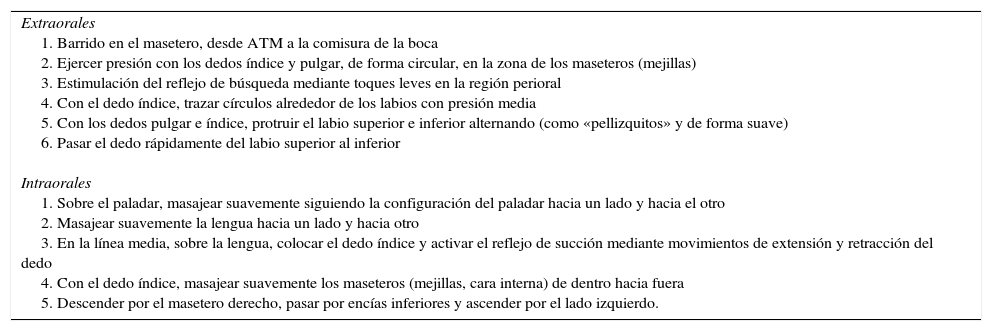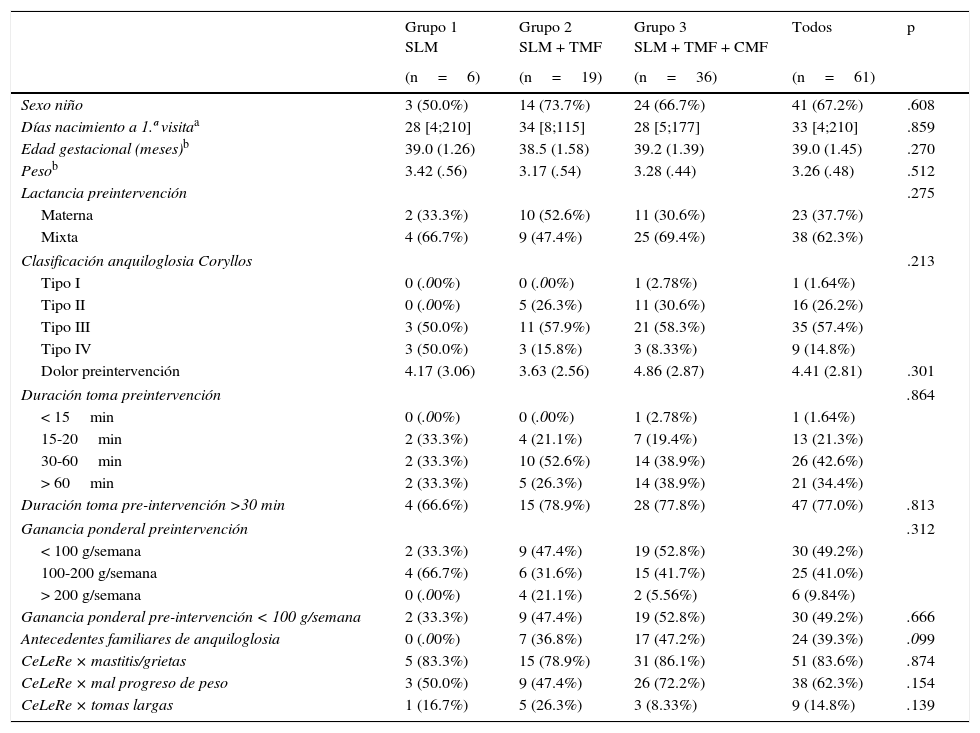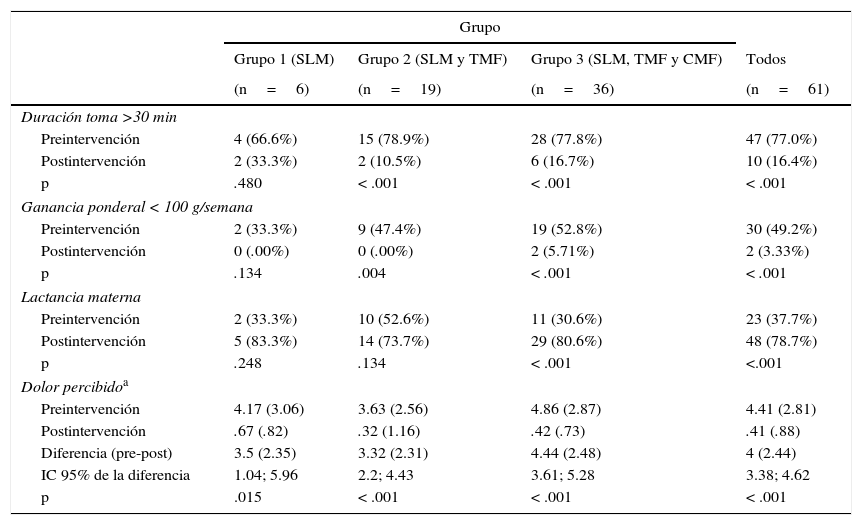La limitación de la movilidad lingual en neonatos puede ocasionar problemas en la lactancia, entre ellos: dolor-grietas-mastitis en la madre, mal progreso de peso del neonato y duración excesivamente larga de las tomas. El objetivo de este trabajo es evaluar la efectividad de los tratamientos realizados en los pacientes con anquiloglosia y trastornos de succión.
Material y métodosEstudio descriptivo preliminar de la efectividad del circuito establecido entre los servicios de Cirugía Oral y Maxilofacial, Logopedia y Rehabilitación Orofacial y Lactancia Materna para el tratamiento de los pacientes que acuden con problemas de lactancia materna y se les diagnostica anquiloglosia.
ResultadosSe trató a 61 pacientes de edades entre 0 y 6meses con anquiloglosia asociada a problemas clínicos relacionados con la lactancia: 20 niñas (32.8%) y 41 niños (67.2%). Se establecieron 3 grupos según el tratamiento realizado: grupo1 (n=6) únicamente las sesiones de lactancia materna (SLM), grupo2 (n=19) terapia miofuncional (TMF) y asesoramiento en SLM, y grupo3 (n=36) frenotomía y siguieron TMF y asesoramiento de SLM. La anquiloglosia tipoiii es el frenillo lingual más frecuente (57.4%). En el total de la muestra se observaron mejorías en los parámetros que valoran la efectividad y el confort de la lactancia materna.
ConclusionesMejorar la succión es posible; se recomienda estimular la succión con terapia miofuncional antes y después de la frenotomía, y también en aquellos casos en los que no será necesaria la cirugía.
The limitation of lingual mobility in newborns can cause problems in lactation. Among these problems are, soreness, cracked nipples or mastitis in the mother, poor weight gain of the newborn, and an excessively prolonged period of time in each breastfeed. The aim of this study is evaluate the effectiveness of the treatment received by the newborns with breastfeeding problems and ankyloglossia.
Material and methodsA preliminary study of the effectiveness of the circuit established between the Oral and Maxillofacial Surgery, Speech Therapy and Orofacial Rehabilitation and the Breastfeeding Department to treat patients that attended the hospital with breastfeeding problems and were diagnosed with ankyloglossia.
ResultsA total of 61 patients with ages between 0 and 6 months had ankyloglossia were seen due to clinical problems related to breastfeeding. Of these, 20 (32.8%) were girls and 41 (67.2%) were boys. Three groups were established in accordance with the treatment carried out: group1 (n=6) solely from the Breastfeeding Sessions (BFS), group2 (n=19) Myofunctional Therapy (MFT) and BFS, and group3 (n=36) Frenotomy, followed by MFT and BFS. Ankyloglossia type3 was the most frequent lingual frenulum (57.4%). From the total sample, improvements were observed in the parameters that assessed the effectiveness and comfort of breastfeeding.
ConclusionsImproving breastfeeding is possible, and in some cases, surgery should not be necessary. If surgery is required, it is recommended to stimulate suction before and after the frenotomy with myofunctional therapy.
Artículo
Comprando el artículo el PDF del mismo podrá ser descargado
Precio 19,34 €
Comprar ahora













